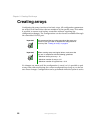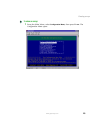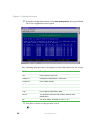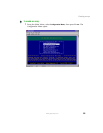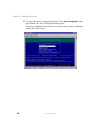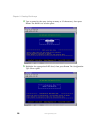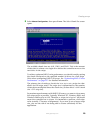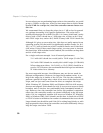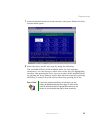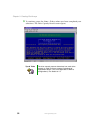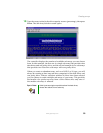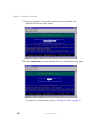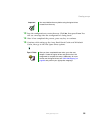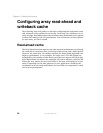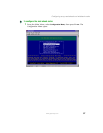30
Chapter 3: Creating Disk Arrays
www.gateway.com
In cases where you are performing larger writes to the controller, you could
go up to 2 MB for a stripe size, since you have more data to cluster. Never
exceed 2 MB for a stripe size, since the controller cannot cluster over
this size.
We recommend that you keep the stripe size to 1 MB or less for general
use, perhaps increasing it for specific applications. This stripe size is
actually the substripe size in RAID 50 cases. A 4+1 array (4 data and 1 parity
drives) with a 256 K chunk has a 1 MB stripe size, as does an 8+1 array
with 128 K stripe size, and an 8+2, RAID 50 array with 256 K chunk size.
Although 8+1 gives an even stripe size, this does not really matter for an
operating system (OS) that writes in significantly smaller chunks. So, 8+1,
10+1, or 11+1 with a chunk size of 64 K would be fine for an OS that does
64 K writes. If the OS does much larger writes, you may want to increase
the chunk size. With writeback cache enabled, the controller can keep data
and do a full stripe write.
For a single enclosure example - best all around performance:
11+1 with 64 K chunk size would yield a 704 K stripe (11×64=704)
10+2 with 128 K chunk size would yield a 640 K stripe (5×128=640)
When using more drives, 14+2 (64 K), or 12+3 (128 K) should be as
good as 12+4. However, we recommend that it be kept to a minimum
of 4 data drives for a subarray.
For most sequential accesses, the difference may not be too much for
different configurations. However, for large block random writes, it can
help if the stripe size is similar to the I/O size. This lets the controller
perform a partial full stripe write, where it has most of the data for a full
stripe, and can just read some from the drives to complete the stripe.
While Windows NT, Windows 2000, and Windows 2003 do 64 K accesses,
these are not aligned. If the chunk size is 64 K, every access crosses a chunk
boundary and so involves two read/modify/write commands instead of
one. However, since the controller can cluster, this problem is somewhat
offset since the controller usually can cluster sufficiently to do full stripe
writes. If it is a completely random 64 K access on Window NT, Windows
2000, or Windows 2003, a 64 K chunk is not the best. A chunk size of 128 K
or 256 K is better to minimize the number of commands that cross chunk.
Larger chunk sizes should be used if the OS is writing large blocks, or with
large sequential writes where the controller can cluster sufficiently. Always
keep the stripe size below 2 MB.



